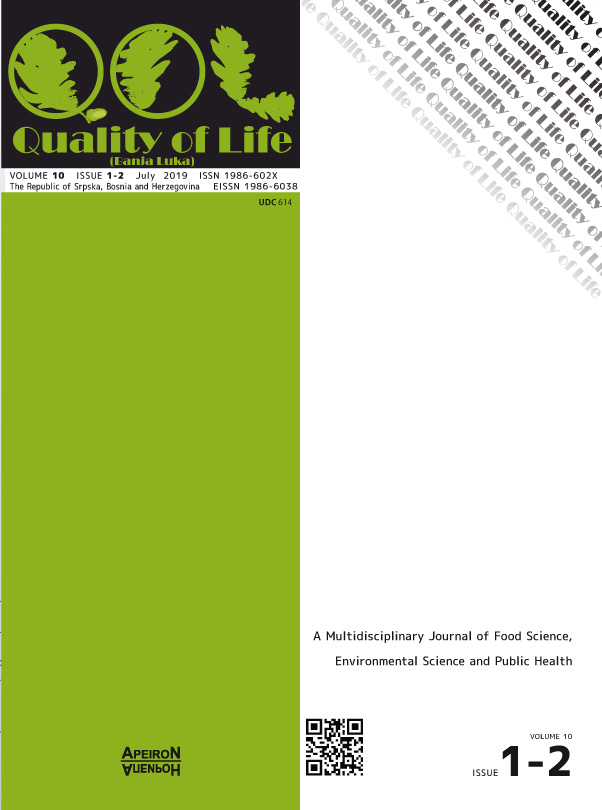Metabolic Syndrome and Pharmacological Treatment Measures
DOI:
https://doi.org/10.7251/QOL1901009SAbstract
Metabolic syndrome is a set of several different pathological conditions and risk factors that are often the cause of many unwanted cardiac and cerebrovascular occurrences. It is highly represented around the world, especially in countries with excessive and inadequate nutrition, insufficient physical activity of the population and obesity, with a constant growth trend. The work included 1052 patients with HTA of which DM was 309 (29.4%). Out of the total number of 1052 patients with metabolic syndrome there were 675 (64.2%) patients. Observing certain determinants of the metabolic syndrome HTA was present in all observed patients. Low HDL cholesterol values were found in 503 (74.5%) patients and the lowest incidence was hyperglycaemia (252 mg / 37.3%). Implemented pharmacological treatment measures have led, in most patients, the blood pressure to optimal or normal. The effect of pharmacological therapy on glycaemic value in patients with metabolic syndrome led to the normalization of glycaemia in majority of patients. The results achieved have improved the quality of life of patients and motivated them for further treatment.Downloads
Published
2019-07-23
Issue
Section
Чланци
